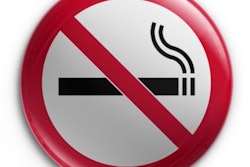
Lung cancer mortality in the state of California is 28% lower than the U.S. average, largely due to the effect of smoking control programs in the state, according to an article published online October 10 in Cancer Prevention Research.
Researchers from the University of California, San Diego School of Medicine and Moores Cancer Center analyzed data on smoking behavior from the 1974 to 2014 U.S. National Health Interview Surveys and lung cancer mortality from the 1970 to 2013 Surveillance, Epidemiology, and End Results (SEER) program.
Their analysis revealed that lung cancer mortality has declined faster in California than in the rest of the country: By 2013, the state's mortality rate was 62.6 deaths per 100,000 people, compared with 87.5 deaths per 100,000 people in the U.S.
This trend corresponded with a relatively larger decline in smoking initiation and an increased rate of smoking cessation in California than in other states. Between 2012 and 2014, only 18.6% of Californians between the ages of 18 and 35 had ever smoked, and 45.7% of smokers had quit by the age of 35; both of these figures were at least 24% better than the U.S. average.
"The combination of a 39% lower initiation rate, 30% lower consumption of cigarettes among those who did smoke, and a 24% higher early quit rate meant that young Californians now have much less exposure to cigarette smoking than those of similar age in the rest of the country," first author John Pierce, PhD, said in a release from the university.
Researchers attributed the decline to the state's aggressive tobacco control efforts. The state responded early to evidence linking smoking to lung cancer, according to researchers, and in 1988 California voters passed an initiative that set up the nation's first statewide comprehensive tobacco control program.




















